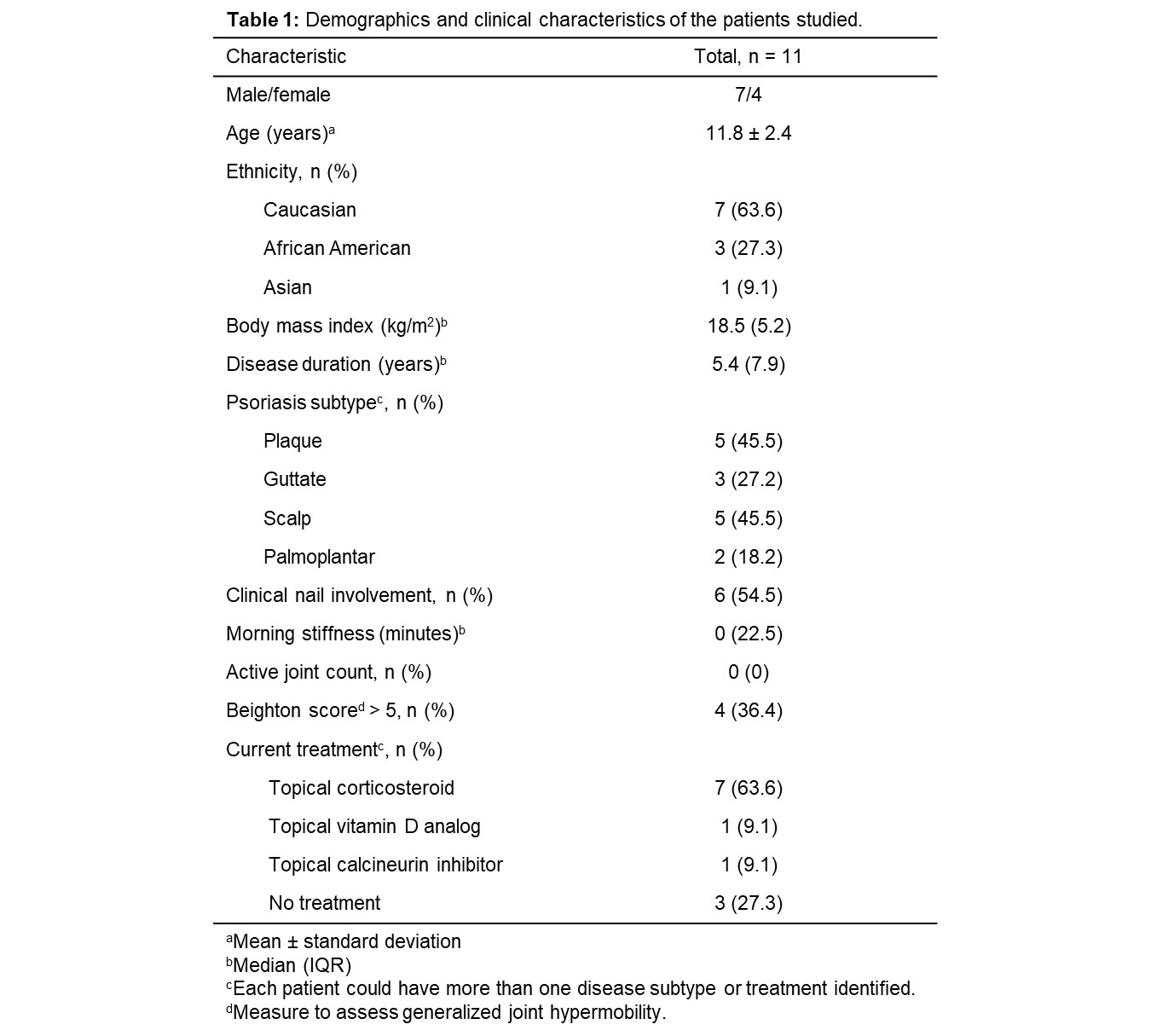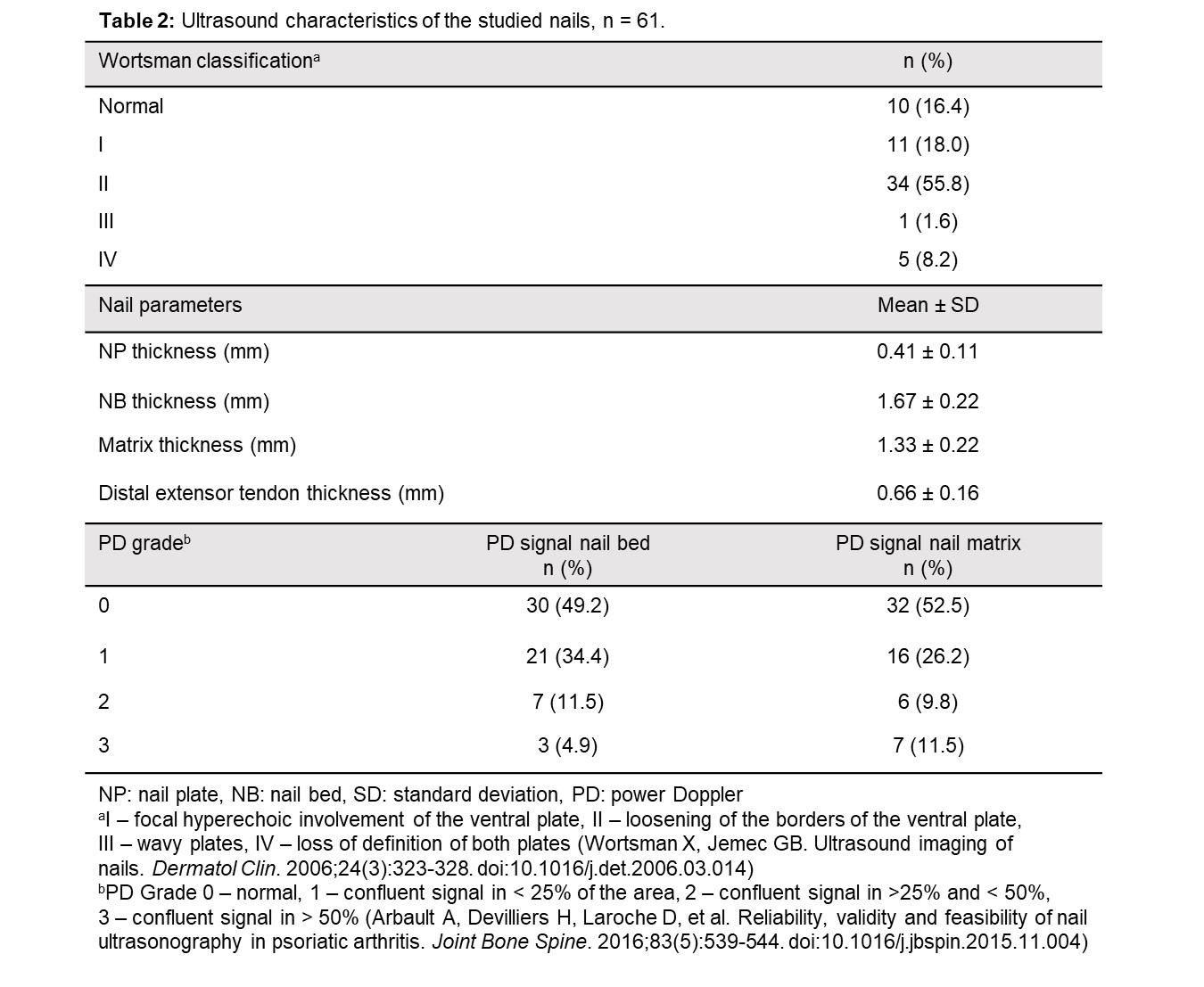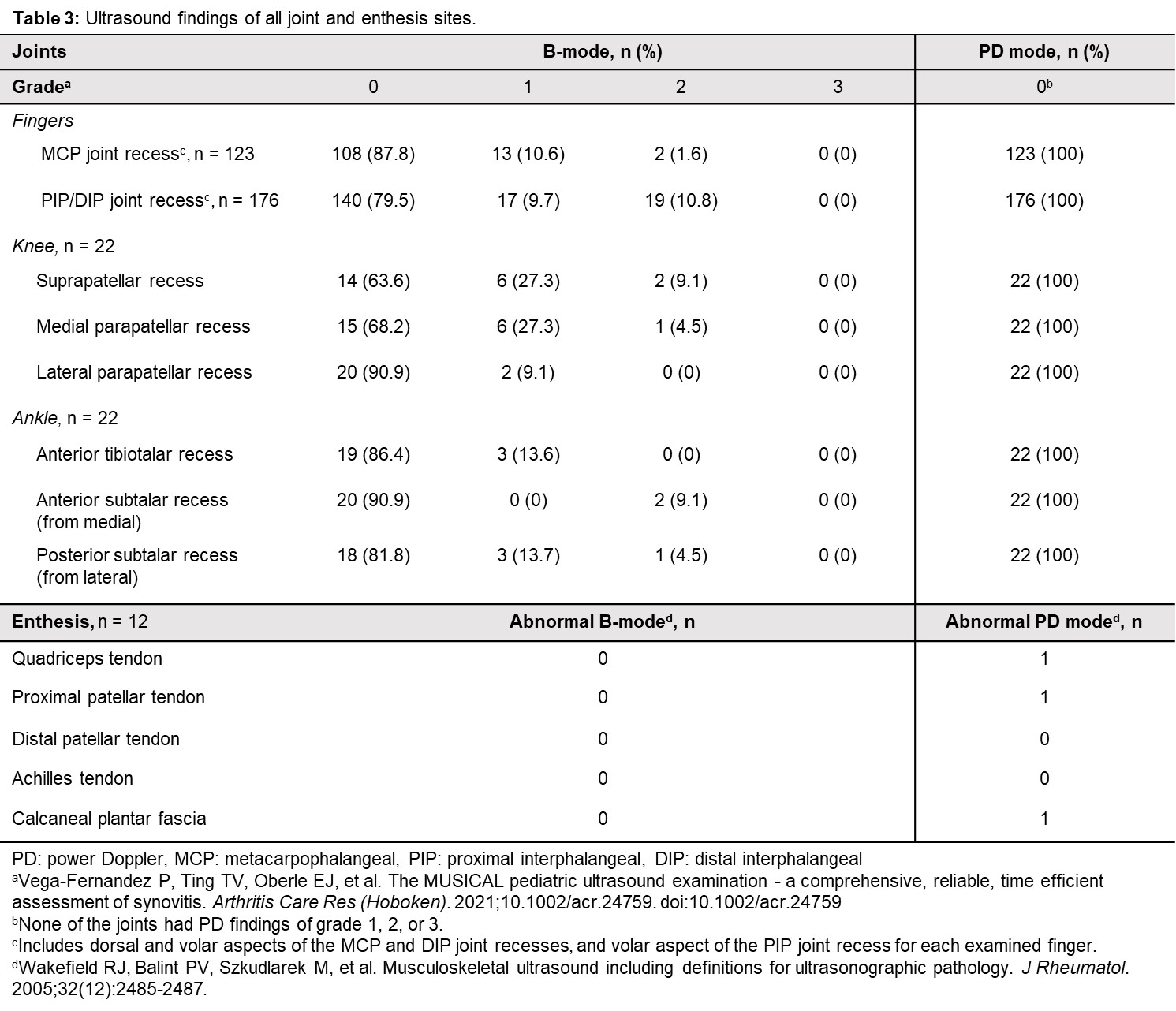Session Information
Session Type: Poster Session A
Session Time: 6:00PM-7:00PM
Background/Purpose: The presentation of juvenile psoriatic arthritis (JPsA) in children with psoriasis can be insidious and poses a diagnostic challenge. Musculoskeletal ultrasound (MSUS) has emerged in recent years as a sensitive and non-invasive imaging modality to detect joint inflammation. A growing number of evidence has shown that adult psoriasis patients without signs of arthritis have findings of subclinical joint pathology on MSUS. These patients with identified imaging abnormalities are more likely to develop active psoriatic arthritis as demonstrated in longitudinal studies. No such research has been performed among children with psoriasis however, highlighting a critical gap in the understanding of pediatric psoriatic disease. The objective of this investigation is to describe MSUS and nail ultrasound (US) findings in children with psoriasis.
Methods: Grey-scale (B) mode and power Doppler (PD) mode US were utilized in this cross-sectional study to evaluate joint, enthesis, and nail findings in pediatric psoriasis patients (< 18 years old) without clinical symptoms of arthritis. Exclusion criteria included acute joint injury, trauma, or joint surgery within the last 3 months, on systemic treatment or oral corticosteroids in the last 2 months, or pregnancy. Each subject underwent a full musculoskeletal exam and MSUS evaluation of seven sites bilaterally: a) joints/nails – fingernails, MCP, and IP joints of the second and third fingers, as well as any finger with psoriatic nail involvement, patella, tibiotalar and subtalar joints, b) entheses – quadriceps, proximal and distal patellar tendon, Achilles, and plantar fascia calcaneal insertion. US images were assessed using an established pediatric-specific scoring system for the joints and semi-quantitative scoring approach for the nails. Enthesitis was evaluated according to the OMERACT definition. Demographic, clinical, and laboratory information was collected when available.
Results: Eleven patients were included until now. Demographic and clinical characteristics are shown in Table 1. The mean duration of the MSUS exam was 66 minutes. US characteristics of the nails studied are displayed in Table 2, and findings of the joints and entheses are shown in Table 3. 51 nails (83.6%) had abnormal nail plate structure per the Wortsman classification, and roughly 20% of nails had increased PD activity in either the nail bed or nail matrix classified as grade 2 or 3. Eight out of 11 patients (72.7%) had at least one grade 2 finding of synovitis on B-mode, with the PIP/DIP, suprapatellar, and anterior subtalar joint recesses most frequently affected. Two patients (18.2%) had enthesopathy involving the lower extremities identified on PD examination.
Conclusion: Subclinical inflammatory abnormalities of the nails, joints, and entheses were identified utilizing MSUS in children with psoriasis who did not have clinical manifestations of arthritis on exam. Ongoing studies involving additional pediatric psoriasis patients and healthy controls is underway to more clearly elucidate the significance of these findings.
To cite this abstract in AMA style:
Nedorezov L, Ting T, Vega-Fernandez P. Musculoskeletal Ultrasound Findings in Children with Psoriasis [abstract]. Arthritis Rheumatol. 2023; 75 (suppl 4). https://acrabstracts.org/abstract/musculoskeletal-ultrasound-findings-in-children-with-psoriasis/. Accessed .« Back to 2023 Pediatric Rheumatology Symposium
ACR Meeting Abstracts - https://acrabstracts.org/abstract/musculoskeletal-ultrasound-findings-in-children-with-psoriasis/



